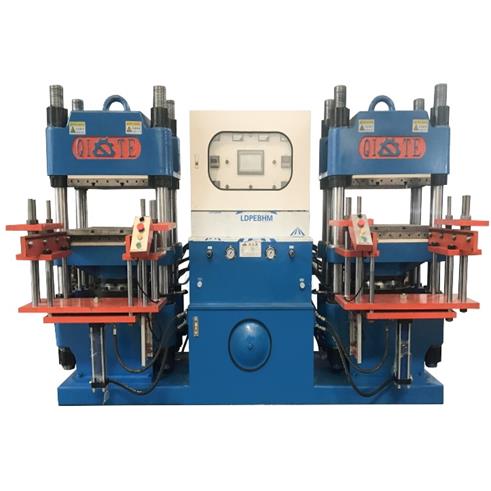A Vulcanizer is a piece of equipment specially used for the vulcanization of materials such as rubber and plastics. Vulcanization is a processing technology that heats rubber or plastic and adds vulcanizing agents such as sulfur to form a cross-link structure between the material molecules, thereby improving the strength, wear resistance, aging resistance and elasticity of the material. The function of the vulcanizer is to put rubber or plastic products into the vulcanization chamber for vulcanization under controlled temperature, pressure and time.

The following is the development history of the Vulcanizing Machine:
1.Early vulcanization methods: In the early 19th century, people began to realize that vulcanization could improve the properties of rubber. The earliest vulcanization method was manual, where rubber products were put into sulfur fumes to vulcanize them. This method is inefficient and difficult to control temperature and vulcanization time.
2.Thomas Hancock's improvements: In the 1820s, British inventor Thomas Hancock improved the vulcanization method and introduced the concept of steam vulcanization. He invented a vulcanization tank that vulcanized rubber at controlled temperature and humidity.
3.Goodyear's Discovery: In 1839, American inventor Charles Goodyear discovered the importance of vulcanized rubber. He discovered that adding sulfur to rubber and heating it at high temperatures made the rubber more durable and durable.
4.The invention of the Vulcanizing Machine: With the in-depth study of the vulcanizing process, the development of vulcanizing mechanization also began. In the late 19th and early 20th centuries, vulcanizers began to appear, machines that vulcanized rubber at controlled temperatures and pressures. These machines usually use steam or electricity as energy source, improving the efficiency and quality of vulcanization.
5.Automation and modernization: With the advancement of science and technology, vulcanizing machines have gradually realized automation and modernization. Modern vulcanizing machines are equipped with advanced control systems that can accurately control the temperature, pressure and time of vulcanization to ensure the stability of product quality. In addition, the structure and materials of the vulcanizer have been improved to increase durability and safety.
In general, the development of vulcanizers has gone through a process from manual operation to mechanization, automation and modernization. These advances have made the vulcanization process more efficient, stable and reliable, providing a solid foundation for the production of rubber and plastic products.
FAQ:
Yes, vulcanizers are widely used in rubber industry, plastic industry and related fields. This is because vulcanization can greatly improve the properties of materials such as rubber and plastics, making them more elastic, wear-resistant, aging-resistant and chemical-resistant.
There are many types of vulcanizers, which can be classified according to different vulcanization processes, production needs and material properties.
The vulcanizer is not recommended for use in a home environment. The vulcanizer is a large-scale, high-temperature, high-pressure industrial equipment mainly used for the vulcanization of materials such as rubber and plastics. The operation of a Vulcanizing Press requires specialized knowledge and skills and is potentially dangerous. The vulcanization process produces high temperatures and toxic gases, and requires precise temperature, pressure and time control, conditions that are difficult to achieve in a home environment.
Rubber vulcanizers and silicone rubber vulcanizers are both equipment used for material vulcanization, but they are mainly used for different types of materials, so there are some differences in design and use.